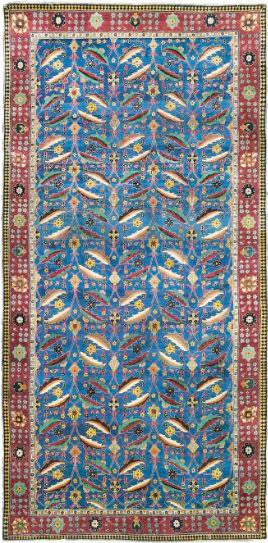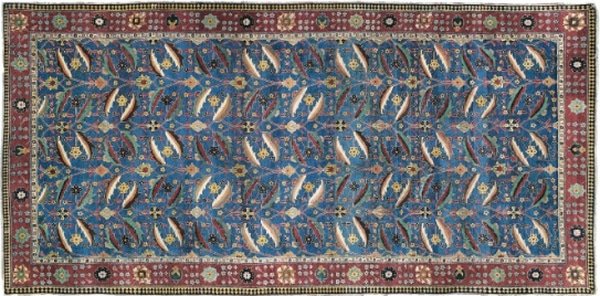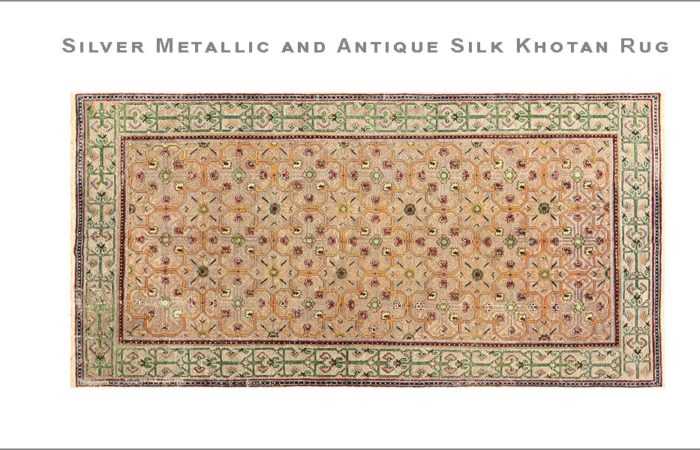Most Expensive Painting Ever Sold At Auction Vs. the Most Expensive Rug
*****Click Here To Learn About The Current Most Expensive Rug Ever Sold At Auction*****
The 6 Most Expensive Rugs In The World
Who was Edvard Munch?
Edvard Munch (1863-1944) was a Norwegian painter and printmaker, best known for his iconic work “The Scream.” He was a leading figure in the Symbolist and Expressionist movements and is considered one of the pioneers of modern art.
Munch’s art is characterized by its emotional intensity, psychological themes, and a vivid use of color and symbolism. He often explored themes of love, death, anxiety, and human relationships in his works. “The Scream,” created in multiple versions between 1893 and 1910, is perhaps his most famous painting and has become an iconic representation of existential dread and human anguish.
Munch’s early life was marked by personal tragedy, including the death of his mother from tuberculosis when he was young, as well as the later deaths of his father and sister from the same disease. These experiences had a profound impact on his art, which often delved into themes of mortality and suffering.
Munch’s artistic style evolved over the years, and he experimented with various techniques, including painting, printmaking, and photography. His work was met with both praise and controversy during his lifetime, as his depictions of raw emotion and psychological turmoil were seen as unconventional and sometimes disturbing.
Today, Edvard Munch’s contributions to the art world are widely recognized and celebrated. His works can be found in major museums and collections around the world, and he continues to be a significant influence on contemporary artists and the development of modern art.
What Is The Meaning Behind “The Scream” by Edvard Munch?
“The Scream” by Edvard Munch is one of the most iconic and recognizable paintings in art history, and it has been widely interpreted in various ways. The painting features a figure with a distorted face standing on a bridge with a turbulent sky in the background. The figure’s hands are placed on their cheeks, and the whole scene radiates a sense of anxiety and despair.
While the exact meaning of the painting can be open to personal interpretation, it is generally meant to convey feelings of existential angst, isolation, and psychological turmoil. Munch himself wrote about the inspiration behind the painting, stating that he felt a scream passing through nature while walking along a fjord in Norway, and that the painting represented his attempt to capture that intense emotional experience.
“The Scream” is often seen as a representation of the anxieties and uncertainties of modern life, particularly in the late 19th century when the world was undergoing significant societal and technological changes. The distorted and almost ghostly figure could be seen as a reflection of the artist’s own inner emotional struggles and a commentary on the human condition.
Munch’s personal experiences, including the deaths of his family members and his own battles with mental health, likely contributed to the emotional intensity of the painting. The turbulent sky and the twisted landscape also emphasize a sense of unease and instability.
The painting’s universal themes of anxiety, isolation, and existential questioning have allowed it to resonate with people across generations and cultures. Its enduring popularity and continued fascination are a testament to the power of art to capture and convey complex human emotions and experiences.
Auctioning Off “The Scream” by Edvard Munch at Sotheby’s
For twelve agonizing minutes the audience watched and even cheered as they watched five bidders compete for the pleasure of owning The Scream by Edvard Munch. The buzz could be felt as the bids kept inching their way higher and high, till the bidding paused for a bit at $99 million dollars which prompted Tobias Meyer, the auctioneer, to say, “I have all the time in the world.”
And the applause could be heard when the $100 million bid was cast, shattering the previous record for most expensive painting ever sold, set two years ago by Christie’s New York when Picasso’s Nude, Green Leaves and Bust brought $106.5 million.

The Scream By Edvard Munch Becomes most Expensive Painting Ever Sold At Auction
This got me thinking about the value of art as it relates to antique rugs. On 15 April 2010 at Sotheby’s London, King Street location the record for the most expensive rug ever sold was set at a “measly” $9,599,535. While almost $10,000,000 is not chump change by any means, it by no means the norm.

Most Expensive Rug Ever Sold At Auction – Persian Vase Carpet
Antique Oriental rugs in general, might fetch a million plus every now and then but art is seen consistently selling for ten times that. Percentage wise, rare antique rugs have seen the median price points escalate tremendously over the past couple of years but they are still tremendously undervalued. Young collectors who are priced out of the art market are shifting their focus to rugs and textiles clamoring for the best examples while the prices are still considerably low.

Nude Green Leaves and Bust by Picasso Is The Second most Expensive Painting Ever Sold At Auction
As the years go by, we expect the prices for antique oriental rugs to continue their upward momentum. The number of rare pieces available on the market has dwindled tremendously over the past two years thanks mostly to the recent opening of a number of museums combined with the spike in interest by collectors.

Most Expensive Persian Vase Carpet Ever Sold At Auction

Second Most Expensive Rug Ever Sold Auction – 16th Century Safavid Carpet
Antique carpet sells for nearly $10,000,000
Search the Most Comprehensive Collection of Antique Rugs Online
Most Expensive Persian Rug – At a recent sale of Christie’s in London, the early Persian Kerman vase carpet from the seventeenth century pictured here shattered all previous records for rug sales in auction, going for nearly $10,000,000, twice the existing record.
High quality antique rugs and rare pieces are repeatedly commanding prices beyond market expectations. This is the time to buy, at the point where the trend has become discernible, but before it has effected a radical escalation in price structure.
Some of the earliest vase designs are extremely intricate, with a plethora of blossoms, leaves and trees in brilliant colors. One example is the spectacular fragment exhibited in Milan in 1981. Two fragments of a carpet with a slightly later version of a similar design, are now in the Victoria and Albert Museum.
From these extremely complex designs various elements appear to have been used in later carpets to create different effects. The designs on these two carpets were simplified in a spectacular antique carpet now in the Gulbenkian collection.

Antique Vase Carpet / Most Expensive Persian Rug Ever Sold
It has spectacular swirling scrolling saz leaves enclosing palmettes on a near black ground. An interesting feature of these three carpets is that they all split the curving serrated leaves into two or three colors, running longitudinally. The de Behague carpet from the renowned collection of Martine Marie Pol, Comtesse de Behague uses exactly this tripartite division of leaves, but the designers have worked out an arrangement that makes the blossoms completely secondary to the leaves.
It is also a carpet which can claim to be the earliest design which can clearly be demonstrated to be a prototype for the most popular Persian rug design of all – the so-called herati pattern. The Behague collection included antiquities, Islamic Art and a number of European and Oriental rugs.
Much of the collection was dispersed after her death in 1927, but this outstanding carpet was not included and sold at some later stage between the 1930’s and the 1950’s. This carpet provided evidence for the theory that the weavers of Kerman rugs in the seventeenth century were the most inventive and influential of all carpet designers in the history of Persian carpet.
This art blog post about the most expensive painting ever sold to date was publish by Nazmiyal rugs in New York City, New York.



